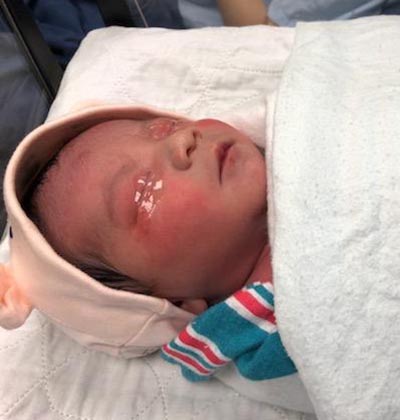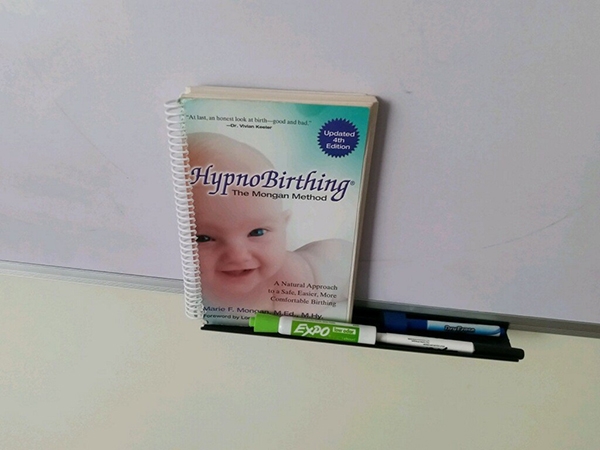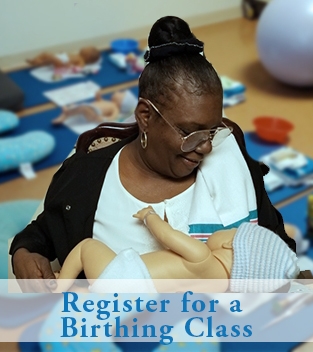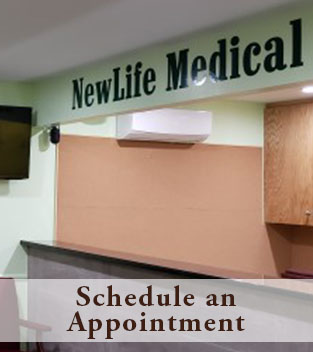Reduce the Risk of SIDS & Suffocation
About 3,500 babies die each year in the United States during sleep because of unsafe sleep environments. Some of these deaths are caused by entrapment, suffocation, or strangulation. Some infants die of sudden infant death syndrome (SIDS). However, there are ways for parents to keep their sleeping baby safe.
What You Can Do:
- Always place your baby on his or her back for every sleep time.
- Always use a firm sleep surface. Car seats and other sitting devices are not recommended for routine sleep.
- The baby should sleep in the same room as the parents, but not in the same bed (room-sharing without bed-sharing).
- Keep soft objects or loose bedding out of the crib. This includes pillows, blankets, and bumper pads.
- Wedges and positioners should not be used.
- Pregnant woman should receive regular prenatal care.
- Don’t smoke during pregnancy or after birth.
- Breastfeeding is recommended.
- Offer a pacifier at nap time and bedtime.
- Avoid covering the infant’s head or overheating.
- Do not use home monitors or commercial devices marketed to reduce the risk of SIDS.
- Infants should receive all recommended vaccinations.
- Supervised, awake tummy time is recommended daily to facilitate development and minimize the occurrence of positional plagiocephaly (flat heads).
Place your baby to sleep on his back for every sleep.
- Babies up to 1 year of age should always be placed on their back to sleep during naps and at night. However, if your baby has rolled from his back to his side or stomach on his own, he can be left in that position if he is already able to roll from tummy to back and back to tummy.
If your baby falls asleep in a car seat, stroller, swing, infant carrier, or infant sling, he should be moved to a firm sleep surface as soon as possible.
- Swaddling (wrapping a light blanket snugly around a baby) may help calm a crying baby. If you swaddle your baby, be sure to place him on his back to sleep. Stop swaddling your baby when he starts to roll.
Place your baby to sleep on a firm sleep surface.
- The crib, bassinet, portable crib, or play yard should meet current safety standards. Check to make sure the product has not been recalled. Do not use a crib that is broken or missing parts or that has drop-side rails. For more information about crib safety, visit the Consumer Product Safety Commission Web site.
- Cover the mattress with a tight-fitting sheet.
- Do not put blankets or pillows between the mattress and fitted sheet.
- Never put your baby to sleep on a water bed, a cushion, or a sheepskin.
Keep soft objects, loose bedding, or any objects that could increase the risk of entrapment, suffocation, or strangulation out of the crib.
- Pillows, quilts, comforters, sheepskins, bumper pads, and stuffed toys can cause your baby to suffocate. Note: Research has not shown us when it’s 100% safe to have these objects in the crib; however, most experts agree that these objects pose little risk to healthy babies after 12 months of age.
Place your baby to sleep in the same room where you sleep but not the same bed.
- Do this for at least 6 months, but preferably up to 1 year of age. Room-sharing decreases the risk of SIDS by as much as 50%.
- Keep the crib or bassinet within an arm’s reach of your bed. You can easily watch or breastfeed your baby by having your baby nearby.
- Babies who sleep in the same bed as their parents are at risk of SIDS, suffocation, or strangulation. Parents can roll onto babies during sleep, or babies can get tangled in the sheets or blankets.
Breastfeed as much and for as long as you can. This helps reduce the risk of SIDS.
- The AAP recommends breastfeeding as the sole source of nutrition for your baby for about 6 months. When you add solid foods to your baby’s diet, continue breastfeeding until at least 12 months. You can continue to breastfeed after 12 months if you and your baby desire.
Schedule and go to all well-child visits. Your baby will receive important immunizations.
- Recent evidence suggests that immunizations may have a protective effect against SIDS.
Keep your baby away from smokers and places where people smoke. This helps reduce the risk of SIDS.
- If you smoke, try to quit. However, until you can quit, keep your car and home smoke-free. Don’t smoke inside your home or car, and don’t smoke anywhere near your baby, even if you are outside.
Do not let your baby get too hot. This helps reduce the risk of SIDS.
- Keep the room where your baby sleeps at a comfortable temperature.
- In general, dress your baby in no more than one extra layer than you would wear. Your baby may be too hot if she is sweating or if her chest feels hot.
- If you are worried that your baby is cold, use a wearable blanket, such as a sleeping sack, or warm sleeper that is the right size for your baby. These are made to cover the body and not the head.
Offer a pacifier at nap time and bedtime. This helps reduce the risk of SIDS.
- If you are breastfeeding, wait until breastfeeding is going well before offering a pacifier. This usually takes 3 to 4 weeks. If you are not breastfeeding, you can start a pacifier as soon as you like.
- It’s OK if your baby doesn’t want to use a pacifier. You can try offering a pacifier again, but some babies don’t like to use pacifiers.
- If the pacifier falls out after your baby falls asleep, you don’t have to put it back in.
- Do not use pacifiers that attach to infant clothing.
- Do not use pacifiers that are attached to objects, such as stuffed toys and other items that may be a suffocation or choking risk.
Do not use home cardio respiratory monitors to help reduce the risk of SIDS.
- Home cardio respiratory monitors can be helpful for babies with breathing or heart problems, but they have not been found to reduce the risk of SIDS.
Use caution when buying products that claim to reduce the risk of SIDS.
- Wedges, positioners, special mattresses and specialized sleep surfaces have not been shown to reduce the risk of SIDS, according to the AAP.
What Expectant Moms Can Do:
- Schedule and go to all prenatal doctor visits.
- Do not smoke, drink alcohol, or use drugs while pregnant or after the birth of your newborn. Stay away from smokers and places where people smoke.
- Hold your newborn skin to skin while breastfeeding. If you can breastfeed, do this as soon as you can after birth. Skin-to-skin contact is also beneficial for bottle-fed newborns.
What Sleepy Parents Need to Know:
- It is safer to feed your baby on your bed than on a sofa or cushioned chair. Make sure to remove pillows, blankets, or other soft bedding, in case you fall asleep while feeding. If you do fall asleep, move your baby back into her own bed as soon as you awake.
- Be careful not to fall asleep on a sofa or cushioned chair while holding your baby.
Remember Tummy Time:
- Give your baby plenty of “tummy time” when she is awake. This will help strengthen neck muscles and help prevent flat spots on the head. Always stay with your baby during tummy time, and make sure she is awake.










